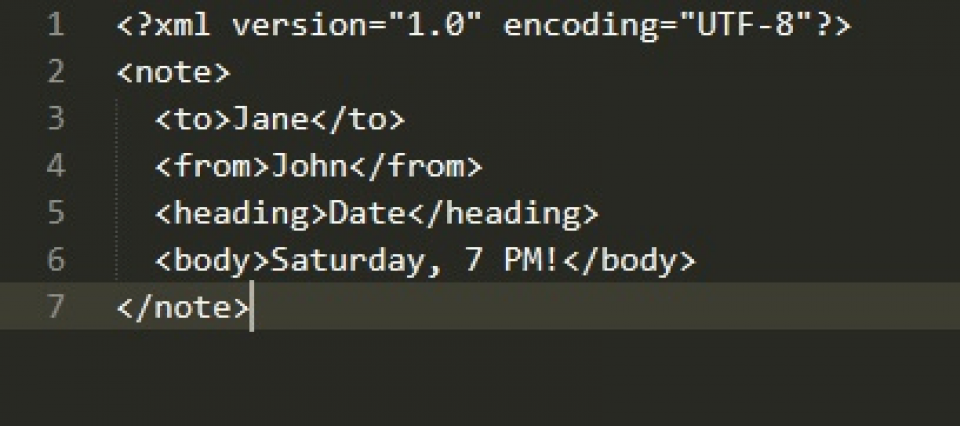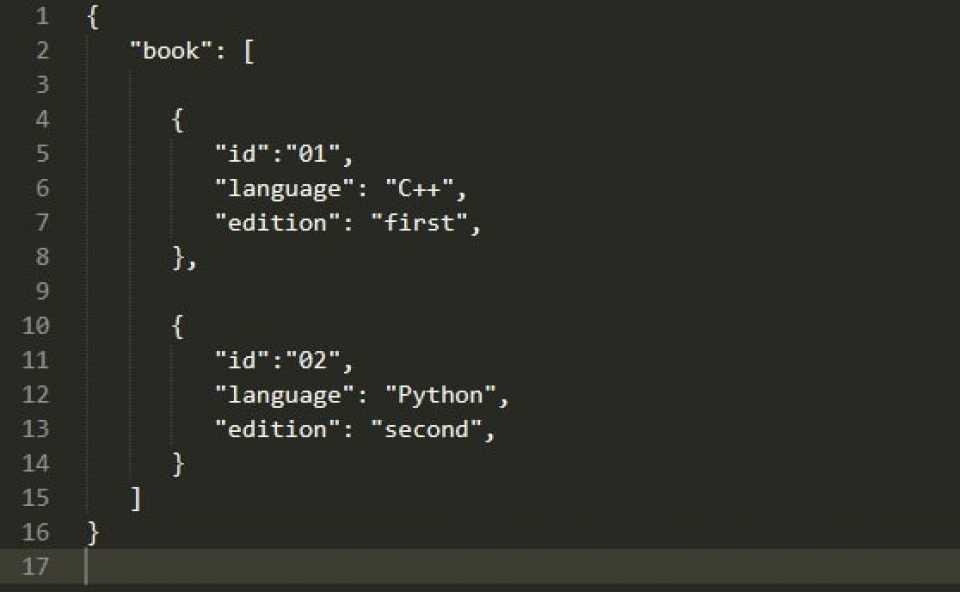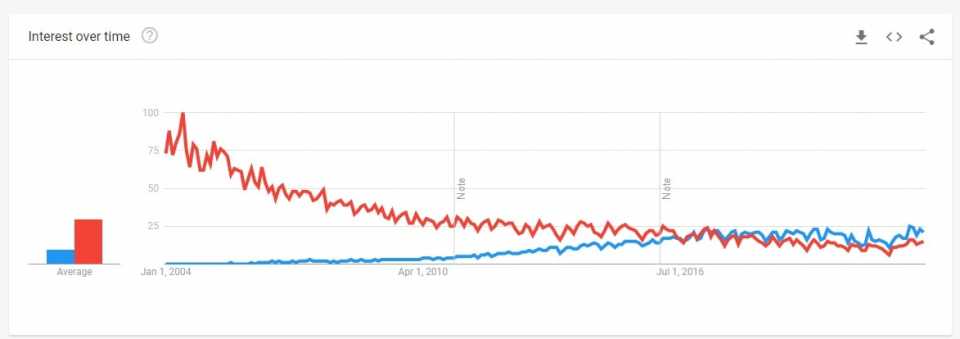
Both JSON and XML have been around for decades, though XML is a bit older. Developers have used both extensively, and each comes with its own set of unique features.
Here, we’ll explain the differences between JSON and XML, while also talking about what both actually are, and their individual pros and cons. If you’d like the short answer, you can check out the summarized table below; we go into the details after.
Feature
XML
JSON
XML is a markup language, not a programming language, that has tags to define elements.
JSON is just a format written in JavaScript.
XML data is stored as a tree structure. Example:
2001 Varsha 2002 AkashData is stored like a map with key value pairs. Example:
Can perform processing, and formatting documents and objects
Does not do any processing or computation
Bulky and slow in parsing, leading to slower data transmission
Very fast as the size of file is considerably small, faster parsing by the JavaScript engine and hence faster transfer of data
Supports namespaces, comments and metadata
There is no provision for namespace, adding comments or writing metadata
Document size is bulky and with big files, the tag structure makes it huge and complex to read.
Compact and easy to read, no redundant or empty tags or data, making the file look simple.
Doesn’t directly support arrays. To be able to use an array, one has to add tags for each item.
Data Types Support
Supports many complex data types including charts, images, and other non-primitive data types.
JSON supports only strings, numbers, arrays, Booleans, and objects. Objects can only contain primitive types.
XML supports UTF-8 and UTF-16 encodings.
JSON supports UTF as well as ASCII encodings.
XML structures are prone to some attacks as external entity expansion and DTD validation are enabled by default. When these are disabled, XML parsers are safer.
JSON parsing is safe almost all the time except if JSONP is used, which can lead to Cross-Site Request Forgery (CSRF) attack.
Though the X in AJAX stands for XML, because of the tags in XML, a lot of bandwidth is unnecessarily consumed, making AJAX requests slow.
As data is serially processed in JSON, using it with AJAX ensures faster processing and is hence preferable. Data can be easily manipulated using the eval() method.

XML (Extensible Markup Language) is the default choice for data interchange because virtually every language has a parser for it. It is an application of SGML and was compiled by a working group of eleven members. Its first draft was published between August and November 1996 at Sun Microsystems, and the first version of XML was released in February 1998.
It is easy to fetch particular data from XML and there are schemas that can validate the XML. XML is used extensively in today’s online world – banking services, online retail stores, integrating industrial systems, among other things.
Pros
Cons
Create interactive web pages, store and render content data to the user based on processing logic using the XSLT processor.
XML requires a processing application.
XML simplifies the platform change process.
XML syntax can sometimes be confusing as it is similar to other alternatives.
With the help of XML, the exchange of data is done quickly between different platforms. So, it makes documents transportable across systems and applications.
No intrinsic data type support.
Has a provision to define metadata in a reusable and portable format.
The XML syntax is redundant.
More accurate web search results because data is stored inside tags.


The JSON (JavaScript Object Notation) data format was first specified by Douglas Crockford in March 2001. Its official website launched in 2002, and by 2005 Yahoo started offering its web services in JSON. It soon became an ECMA international standard by 2013. The most recent JSON format standard was published in 2017.
A better option for XML for data transfers, JSON requires less coding and has a smaller size, making it faster to process and transmit data. While it is written in JavaScript, it is language-independent. However, it doesn’t have any of the powerful validation and schema-related features that XML has. So, what makes JSON so popular?
With the popularity of REST APIs over the SOAP/WSDL model, JSON gained momentum in the programming of API code and web services. It is text-based, light-weight, and has an easy-to-parse data format requiring no additional code for parsing.
JSON thus helps in faster data interchange and web service results. So for web services that need to just return a lot of data and display the same, the ideal choice is JSON.
Pros
Cons
JSON API offers a high-level facade, thus simplifying commonly used use-cases.‬ ‬‬‬‬‬‬‬‬‬‬‬‬‬‬‬‬‬‬‬‬‬‬‬‬‬‬‬‬‬‬‬‬‬‬‬‬‬‬‬‬‬
JSON offers poor extensibility as no namespace support.
JSON is quite fast as it consumes very little memory space suitable for large object graphs or systems.
Limited development tools support.
The JSON library is open source and free to use for everyone.
It provides support for formal grammar definition.
The Jackson API provides default mapping for many objects to be serialized.
Creates clean, and compatible JSON results that are easy to read.
The JSON library does not require any other library for processing.
Supports all browsers.

The following examples illustrate the differences in structure between XML and JSON
XML
JSON
01 Adam Cloud computing DevelopmentAs we see, the tag structure certainly adds some complexity, while the JSON format seems like reading a simple text! Additionally, with JavaScript-based frameworks like Node.js becoming more popular, getting data in JSON format makes it easy to load data into an object tree.
Another instance where JSON triumphs over XML is when you want to export data from a web app to a database. JSON is a perfect file format for such conversions because every programming language is capable of parsing JSON – a truly open standard and interoperable format!
JSON has bigger roles to play in the future as with the advent of cloud computing and APIs, the need for proper storage and transfer of data is huge now and is likely to grow further in the future.


XML (Extensible Markup Language) has been around for more than 3 decades now and it is an integral part of every web application. Whether a configuration file, mapping document, or schema definition, XML made life easier for data interchange by giving a clear structure to data and helping in dynamic configuration and loading of variables.
JSON stores all of its data in a map format (key/value pairs) that is neat and easier to comprehend. People cite the ease of data modeling or mapping directly to domain objects as the main advantage of JSON over XML — which makes it more predictable and easy to understand the structure. Bear in mind that not everyone agrees with this.
For starters, JSON is just a data format whereas XML is a markup language. You can actually place a query and get your answer through XPath. Similarly, metadata, attributes, and namespaces can be added in XML. Further, XML along with XSL, XSD, XQuery, etc. makes for a powerful combination. These are some important features that still make XML a worthy choice.
In any case, if a project requires document markup and metadata information, it is better to use XML. Otherwise, for a more organized data interchange, JSON could be your preferred choice.
XML or JSON?
Both JSON and XML focus on a somewhat similar purpose, but the choice comes down to the details. The bottom line is that if you have simple data exchanges that disregard semantics and validation, go for JSON. However, even with JSON, it is essential to learn XML and related technologies to do more than just data exchange and fast processing. JSON still has a long way to go before it comes at par with the powers of XML, but has its conveniences.
There is no direct answer to this question as both are tools that have their own use cases. It depends on what your purpose is. If you want simple data exchanges, JSON is better.
XML allows you to create custom makeup languages and has a lot of features. JSON is a data-interchange format that provides a specification for data encoding.
You should use JSON when you create software that communicates with a browser or mobile application. It is designed for exchanging data.
Yes, JSON is faster than XML because it is lightweight. The JSON parser is less complex and takes up less memory.
People are also reading: